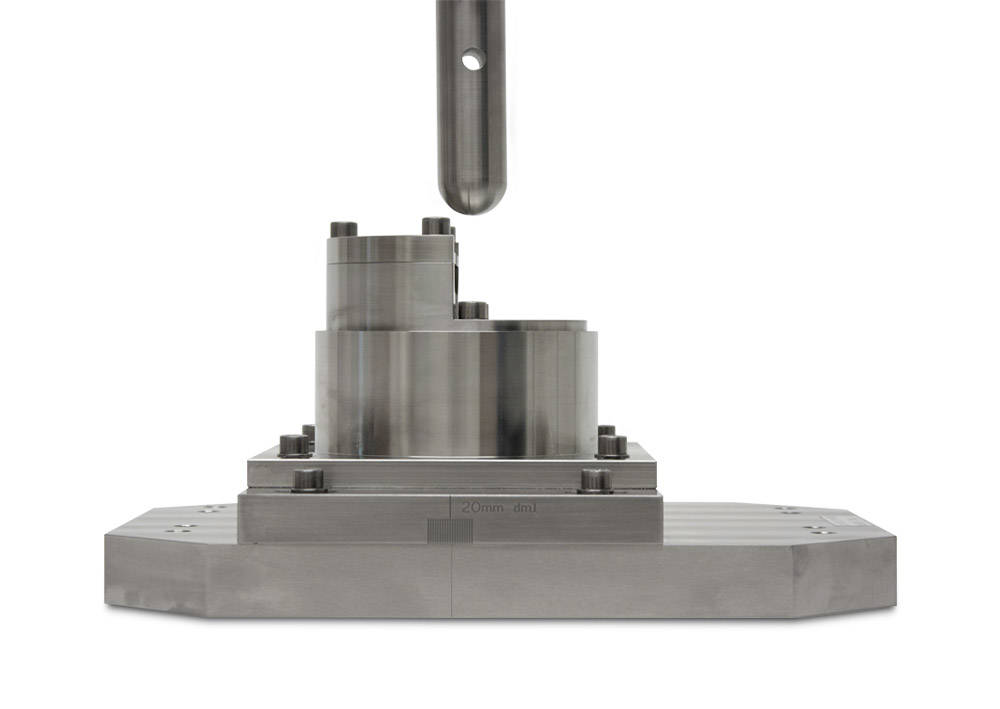A Guide to Cyclic Fatigue Testing of Tibial Tray Components in accordance with ASTM F1800 and ISO 14879
Standard At A GlanceMaterials
- Biomedical
- ISO 14879
- ASTM F1800
- Compression
- High Cycle Fatigue
Written by Toby Lane
A summary of the common parameters in the standardsFatigue fracture of knee tibial trays has been one of the most commonly reported failure mechanisms of Total Knee Replacements (TKR). It is caused by loss of underlying bone support resulting from biological reactions, such as wear-induced osteolysis. Under these conditions, the tibial tray becomes mechanically unstable, and cyclic loading imparted by normal walking causes fatigue cracks, ultimately leading to catastrophic failure.The ISO 14879-1 standard 'Determination of Endurance Properties of Knee Tibial Trays' and ASTM F1800 ‘Standard Practice for Cyclic Fatigue Testing of Metal Tibial Tray Components of Total Knee Joint Replacements’ both provide a common set of test parameters for determining and validating the fatigue properties of different tibial tray designs. ElectroPuls® All-Electric Dynamic Test Instruments will assist designers, manufacturers and researchers through the product life-cycle process, from deriving fundamental material properties, such as resistance to fatigue crack propagation, to testing the entire tibial tray and beyond.
We recommend that you review ISO 14879-1 and ASTM F1800 to fully understand the full requirements.
TEST SYSTEMThese standards require a system that can complete the high number of cycles required whilst maintain close control. Typical test force range are from 900N to 3000N. The minimum capacity machine recommended is therefore the ElectroPuls® E3000 Linear-Torsion All-Electric Dynamic Test Instrument. For higher capacities, the E10000 Electropuls variants or the Servohydraulic 8872 and 8874 would also be suitable options for this testing.

TEST FIXTUREA clamping fixture is used to secure one half of the tibial tray, simulating a fully supported condyle. The other unsupported condyle is then subjected to physiologically representative loading. By using our patented Dynacell™ load cell, dynamic inertial errors (such as those caused by the fixturing and from hydro-dynamics that result when testing in an environmental bath) can be removed, allowing for a more accurate measurement of load being applied to the specimen.
TEST FIXTURETibial tray tests are carried out in force control with the peak force set to 10% of the maximum force the tray can withstand. 900N is a typical value, but depending on the material, the force used is often in excess of 2000N. The number of cycles is determined by the user, but a typical value is 10 million. 10 Hz is the prescribed frequency for this test (although higher frequencies can be used if evidence that test results match those obtained at 10Hz is provided). Tests are run until either the spacer thickness is reduced to 3 mm or fragments, the tibial tray fails, cracks are detected in the specimen following visual inspection or non-destructive inspection or finally, if the maximum number of cycles is reached.
TEST FIXTURETibial tray tests are carried out in force control with the peak force set to 10% of the maximum force the tray can withstand. 900N is a typical value, but depending on the material, the force used is often in excess of 2000N. The number of cycles is determined by the user, but a typical value is 10 million. 10 Hz is the prescribed frequency for this test (although higher frequencies can be used if evidence that test results match those obtained at 10Hz is provided). Tests are run until either the spacer thickness is reduced to 3 mm or fragments, the tibial tray fails, cracks are detected in the specimen following visual inspection or non-destructive inspection or finally, if the maximum number of cycles is reached.